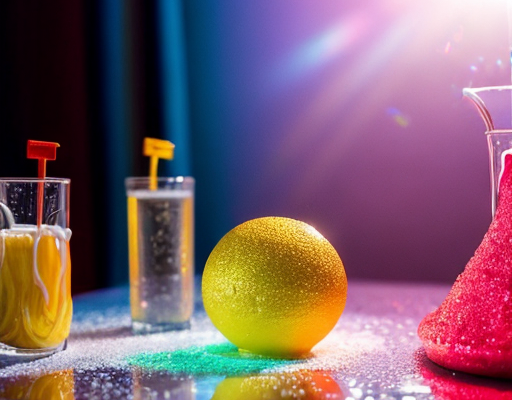
4 Family-Friendly Science Experiments as Games
4 Family-Friendly Science Experiments as Games
Introduction
Science experiments can be a great way to engage children and make learning fun. By turning science experiments into games, you can spark curiosity and encourage children to explore the world around them. In this article, we will explore 4 family-friendly science experiments that can be played as games. These experiments are not only educational but also entertaining, making them perfect for an afternoon of family fun.
1. Balloon Rockets
What You’ll Need
- Balloons
- Drinking straws
- String
- Tape
How to Play
Start by tying a string between two points, such as the backs of two chairs. Make sure the string is tight and straight. Attach a drinking straw to a balloon using tape. Blow up the balloon and pinch the end to prevent the air from escaping. Slide the balloon onto the straw, and let go. The air escaping from the balloon will propel it forward, creating a balloon rocket.
The Science Behind It
This experiment demonstrates Newton’s third law of motion: for every action, there is an equal and opposite reaction. When the air escapes from the balloon, it pushes out with force, propelling the balloon rocket forward.
2. Dancing Raisins
What You’ll Need
- A clear glass or container
- Carbonated water
- Raisins
How to Play
Fill the glass or container with carbonated water. Drop a few raisins into the water and watch them dance. The raisins will rise and fall as they release tiny bubbles of carbon dioxide.
The Science Behind It
The carbon dioxide in the carbonated water creates bubbles. When the raisins are dropped into the water, they stick to the bubbles and are carried to the surface. When the bubbles pop, the raisins fall back down. This motion creates the illusion of dancing raisins.
3. Exploding Volcano
What You’ll Need
- A small plastic bottle
- Baking soda
- Vinegar
- Red food coloring (optional)
How to Play
Fill the plastic bottle about halfway with vinegar. Add a few drops of red food coloring if desired. In a separate container, mix baking soda with water to create a paste. Carefully pour the baking soda paste into the bottle. Stand back and watch as the mixture foams and erupts like a volcano.
The Science Behind It
When vinegar (which is an acid) reacts with baking soda (which is a base), a chemical reaction occurs. This reaction produces carbon dioxide gas, which creates the foaming and eruption effect.
4. Invisible Ink
What You’ll Need
- Lemon juice or milk
- Paintbrush
- White paper
- Candle or heat source
How to Play
Dip the paintbrush into lemon juice or milk and write a message on the white paper. Allow the juice or milk to dry. To reveal the message, hold the paper near a heat source, such as a candle flame or a light bulb. The heat will cause the juice or milk to darken, making the message visible.
The Science Behind It
Lemon juice and milk are acidic substances. When they are heated, they undergo a chemical reaction called oxidation. This reaction darkens the juice or milk, making the invisible ink visible.
Conclusion
Turning science experiments into games can be a fun and effective way to engage children in learning. The 4 family-friendly science experiments described in this article offer not only educational value but also entertainment. Whether it’s launching balloon rockets or creating invisible ink messages, these experiments will captivate children’s curiosity and spark their interest in science.

